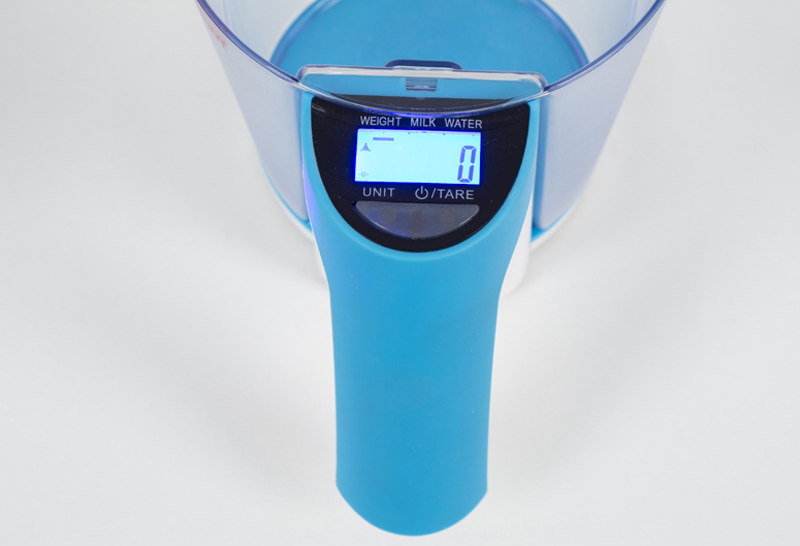In the world of measurement and quantification, tools and scales are essential to ensuring accuracy and consistency across various industries. One such tool, the Kremselv Scale, has gained attention due to its unique application in specific fields such as environmental science, engineering, and other scientific domains. But what exactly is the Kremselv Scale, and why does it hold significance? This article explores the definition, uses, and implications of the Kremselv Scale, highlighting its importance and influence in modern measurement systems.
What is the Kremselv Scale?
The Kremselv Scale is a specialized measurement scale used for determining specific parameters, particularly in scientific and environmental contexts. Named after the developer or the region associated with its origin, the scale is designed to provide a structured method of quantification in a field where standard measurement systems might fall short.
Unlike general-purpose scales such as the Celsius or Fahrenheit temperature scales, or the Richter scale for earthquake magnitude, the Kremselv Scale is tailored for a particular set of measurements. Though it may not be as widely recognized outside of its niche applications, its role in those fields is both crucial and specialized.
In its simplest form, the Kremselv Scale is used to express values in a standardized way, ensuring that they can be compared and understood across different systems, regions, and applications.
How Does the Kremselv Scale Work?
To understand how the Kremselv Scale functions, it’s important to examine its fundamental characteristics. Scales like the Kremselv often rely on certain constants, measurements, or environmental factors to gauge and assign values to various phenomena. The working mechanism involves translating a physical or natural phenomenon into a numerical value that is consistent across different instances of measurement.
In general terms, the Kremselv Scale converts raw data into a structured format. This might involve factors such as:
- Data Normalization: The scale likely adjusts for environmental variations, ensuring measurements remain relevant and applicable in diverse settings.
- Precision: It provides a high degree of precision, especially in fields that demand exactitude, such as environmental monitoring, quality control, or scientific research.
- Range of Application: The scale’s design is meant to cover a broad range of values, adapting to low, medium, and high-level measurements, allowing for versatile use.
What Are the Key Features of the Kremselv Scale?
The Kremselv Scale, as a dedicated measurement tool, comes with several important features that make it suitable for its intended applications. These features enable it to serve a specific purpose in different scientific, environmental, and engineering tasks.
- Customization for Specific Metrics
One of the standout features of the Kremselv Scale is its ability to cater to particular metrics. While many scales serve general-purpose functions, the Kremselv Scale is specialized, meaning it is not just a number but a representation of a specific condition or phenomenon. - Consistency Across Applications
When measurements are taken using the Kremselv Scale, they yield consistent, reproducible results that maintain integrity across various locations and conditions. This consistency is essential in fields that require reliable data for long-term studies or comparisons. - Scientific Relevance
The Kremselv Scale is rooted in scientific principles and is designed to produce values that are meaningful in a scientific context. Whether the scale is used in ecology, hydrology, or atmospheric sciences, the numbers generated are directly applicable to real-world phenomena, making it a valuable tool for professionals in those areas. - Accessibility and Integration
Though the Kremselv Scale is designed for specialized use, it can be integrated with other measurement tools and systems. It may interface with digital sensors, automated systems, and other technologies, allowing for seamless data collection, analysis, and interpretation.
What Are the Applications of the Kremselv Scale?
The Kremselv Scale is primarily used in specialized industries and scientific fields. Below are some of the key areas where this scale plays a significant role:
1. Environmental Monitoring
One of the primary uses of the Kremselv Scale is in environmental monitoring. Whether measuring pollution levels, atmospheric conditions, or environmental stressors on ecosystems, the scale provides precise readings that help track changes over time. It is particularly useful in long-term studies where consistency is key.
2. Engineering and Structural Analysis
In engineering, particularly when evaluating material strengths, vibrations, or the structural integrity of components, the Kremselv Scale is employed to measure parameters that cannot be captured by standard measuring tools. It is often used in the analysis of bridges, buildings, and other large-scale infrastructure projects to ensure safety and durability.
3. Climate Studies
The scale is also applied in climate science, where accurate readings are crucial. Whether tracking temperature variations, humidity levels, or other climatological factors, the Kremselv Scale ensures that the data collected is consistent and reliable for analysis and comparison.
4. Agriculture and Crop Management
In agricultural sciences, the scale can measure variables such as soil health, water quality, and crop growth conditions. These data points are integral to improving crop yields, managing resources efficiently, and ensuring sustainable farming practices.
5. Health and Biometric Studies
The Kremselv Scale’s precision can be applied in the health sector, particularly in medical research and biometric studies. For example, when monitoring environmental influences on health, such as air quality and its impact on respiratory conditions, the scale provides measurable data that can be analyzed and used for healthcare policy and intervention strategies.
What Are the Advantages of the Kremselv Scale?
The Kremselv Scale offers several advantages over other general-purpose measuring tools. These include:
- Enhanced Accuracy
Given its specialized nature, the Kremselv Scale provides highly accurate data for very specific types of measurements, ensuring that professionals in fields like science, engineering, and environmental studies can rely on its results for decision-making. - Long-Term Monitoring
In long-term studies where consistency and precision are paramount, the Kremselv Scale ensures that data collected over months or even years will maintain uniformity. This is especially important in fields such as environmental monitoring, where even slight deviations in measurement can have significant implications. - Better Comparison and Standardization
The scale provides a standardized method of measuring complex phenomena. This allows for better comparisons across regions, sectors, and even time periods. By using the same measurement framework, researchers and engineers can ensure they are working from the same baseline of understanding. - Adaptability
While specialized, the Kremselv Scale is adaptable to various technologies, including sensors and automated systems. This allows it to be integrated into existing measurement frameworks seamlessly.
Are There Any Limitations to the Kremselv Scale?
Like any specialized tool, the Kremselv Scale may have certain limitations. These could include:
- Narrow Focus
Because the Kremselv Scale is specialized, it may not be applicable to all types of measurements. It is most useful in contexts where it is designed to be applied, and may not have the versatility of more general-purpose scales. - Complex Calibration
In some cases, accurate use of the Kremselv Scale may require precise calibration and regular adjustments to ensure continued accuracy. This could involve extra time and resources. - Limited Popularity
As a niche scale, the Kremselv Scale may not be as widely recognized or used as other measurement systems, meaning that professionals unfamiliar with it might face a learning curve.
Conclusion: Why is the Kremselv Scale Important?
The Kremselv Scale represents a vital component in specialized measurement systems. Its accuracy, consistency, and ability to adapt to scientific and environmental contexts make it a key tool in fields ranging from engineering to agriculture. Despite its niche applications, the Kremselv Scale’s ability to deliver reliable and precise data underscores its significance in modern measurement systems.
For those in fields that rely on accurate environmental or technical data, the Kremselv Scale provides an invaluable method of quantification that enhances research, development, and operational effectiveness. As technology progresses, the scale’s importance in maintaining precision and consistency will only grow, ensuring its continued relevance in cutting-edge scientific and engineering applications.



